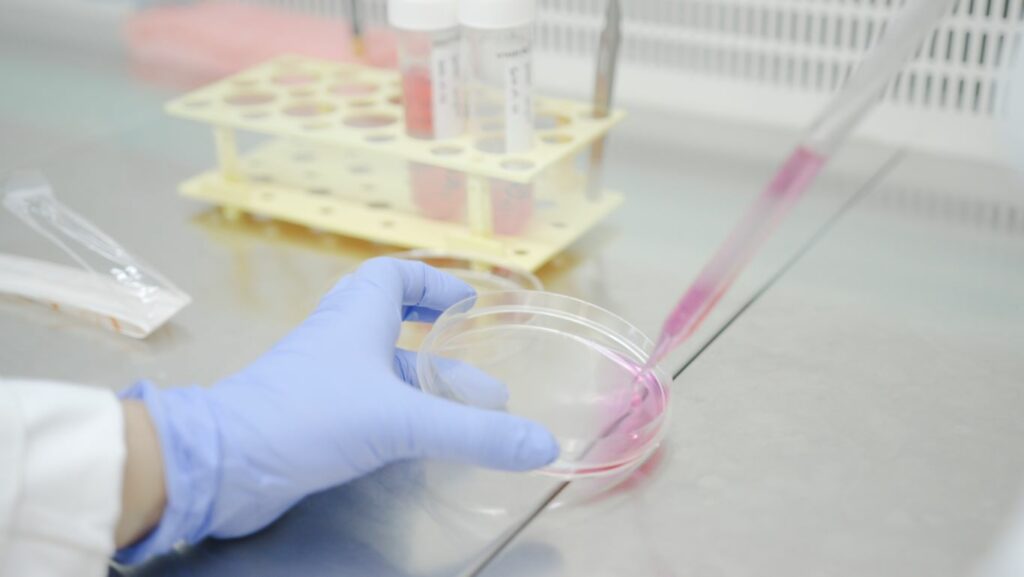Dr Alberto Ortega, leader of the neurodevelopmental disorders research group at IDIBELL, received funding to participate in a US National Institutes of Health (NIH) project that aims to investigate how the extracellular matrix of neurons changes at different stages of development in order to improve understanding of neurodegenerative diseases. The project, called “Refining iPSC-Based Spinal Cord Model Systems by Fabricating Developmentally Programmed Extracellular Matrix Cues”, is coordinated by Professor Evangelos Kiskinis of Northwestern University in Chicago and also involves Dr Zaida Álvarez from IBEC. It will last for five years and has a budget of more than $2.7 million, of which IDIBELL will receive 600,000.
Cell reprogramming technologies and induced pluripotent stem cells (iPSCs) have revolutionised the study of the human central nervous system, enabling the creation of models to study neuronal development and neurological disease. However, culturing iPSC-derived neurons in vitro remains a challenge as they do not reach the maturity required to study neurodegenerative diseases. This is partly due to the lack of an adequate extracellular matrix (ECM), the structure that supports and regulates cells in the body.
This project proposes to address this challenge by studying how the ECM changes at different stages of development, from infancy to old age, using the spinal cord of mice and humans. Based on these findings, the researchers will design artificial arrays that mimic the natural ECM to improve the maturation and ageing of neurons in the laboratory. These advances will enable the development of better iPSC-based spinal cord models with applications in the study of disease and the development of therapies.
At IDIBELL, the team led by Dr Ortega will be responsible to perform mass spectrometry-based analysis to determine proteomic changes in the spinal cord ECM, a technically challenging process that requires very specific protocols. Dr Ortega has already identified some age-specific changes in mice spinal cord ECM, and his team will provide data on human samples obtained thanks to their collaboration with multiple biobanks, including the HUB-ICO-IDIBELL Biobank. Besides, gene expression analysis of such samples will be performed in collaboration with CNAG. Finally, Dr Ortega’s team will test the effect on survival of spinal cord ECM-mimetic matrices designed by IBEC, in 2D and 3D iPSC-based model systems. Matrices that will pass this initial testing, will be sent to the Northwestern University for Kiskinis laboratory to do the subsequent genetic, biochemical and electrophysiological characterization.
The project was funded though the R01 programme by NIH, one of the largest public funders of biomedical research in the world, which supports high-impact, independent research in specific areas of scientific interest. This type of funding allows early-stage researchers to explore innovative solutions to biomedical challenges.
Research reported in this publication was supported by the National Institute on Aging of the National Institutes of Health under Award Number R01AG086270.
The Bellvitge Biomedical Research Institute (IDIBELL) is a biomedical research center created in 2004. It is participated by the Bellvitge University Hospital and the Viladecans Hospital of the Catalan Institute of Health, the Catalan Institute of Oncology, the University of Barcelona and the City Council of L’Hospitalet de Llobregat.
IDIBELL is a member of the Campus of International Excellence of the University of Barcelona HUBc and is part of the CERCA institution of the Generalitat de Catalunya. In 2009 it became one of the first five Spanish research centers accredited as a health research institute by the Carlos III Health Institute. In addition, it is part of the “HR Excellence in Research” program of the European Union and is a member of EATRIS and REGIC. Since 2018, IDIBELL has been an Accredited Center of the AECC Scientific Foundation (FCAECC).

